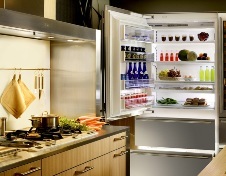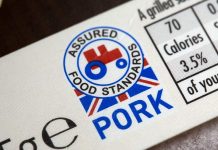At present, more than 40 percent of food losses and waste in developing countries occur at the post-harvest and processing stages, while in industrialized countries, more than 40 percent of food losses and waste occur at retail and consumer levels. Understanding why, when and where food loss or waste occurs is important because it affects how we can prevent it, and hence build more sustainable food systems.
1. Shop smart – more than a third of us go shopping without a list. Plan meals, use grocery lists, and avoid impulse buys. This way, you’re less likely to buy things you don’t need and that you’re unlikely to actually consume. Keep it real! If you know you will be cooking for one person, you won’t need the same amount of food as a family of four. Check what food you have in your cupboards or fridge before you go shopping.
2. Be brave – buy ugly fruits and vegetables. Fruits and vegetables are often thrown away because their size, shape or color don’t necessarily match cosmetic standards. But for the most part, they are perfectly good to be consumed, and their purchase could go a long way to save large quantities of fruits and vegetables from the bin.
3. Keep a healthy fridge. Food needs to be stored between 1 and 5 degrees Celsius for maximum freshness and shelf-life.
4. Practice FIFO. It means First In, First Out. When you plan your meals, try using produce you had bought previously and when you stack up your fridge and cupboards, move older products to the front and place the newly bought ones in the back.
5. Learn to understand the date marks on food packages. The most important thing is to understand the difference between “use by” and “best before” dates. “Use by” indicates a date, by which the food is safe to be eaten; while “best before” means the food is of the expected quality prior to the date, but it is still safe for consumption .Other date marks that can be found on food packages include “Sell by” dates, which are helpful for stock rotation by manufacturers and retailers.
6. Love your leftovers – don’t throw away food because you cooked too much. Using leftovers to make meals is a smart way to ensure you eat everything you buy. Instead of scraping leftovers into the bin, why not use them for tomorrow’s ingredients? Some tuna could be added to pasta and made into a pasta bake. A tablespoon of cooked vegetables can be the base for a crock pot meal. If you don’t want to eat leftovers the day after they’re cooked, freeze and save them for later. Always remember to properly handle and store leftovers, including re-heating, to avoid you or your family getting sick. Meal planning could help too!
7. Turn it into garden food. Some food waste is unavoidable, so why not set up a compost bin for fruit and vegetable peelings. In a few months you will end up with rich, valuable compost for your plants. If you have cooked food waste, then a household or community composter will do the trick. Just feed it with your scraps (you can even put fish and meat in it), sprinkle over a layer of special microbes and leave to ferment. The resulting product can be used on houseplants and in the garden.
Source: FAO





